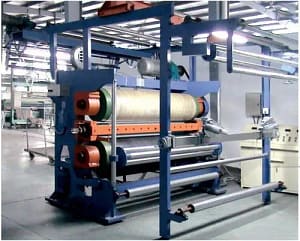The counter current heat exchange core used for food drying utilizes the principle of heat conduction to allow high-temperature drying exhaust gas and low-temperature fresh air to flow in a counter current manner inside the core. Heat exchange is carried out through a heat-conducting plate, allowing fresh air to heat up and exhaust gas to cool down, achieving energy recovery and improving the energy utilization efficiency of the drying system. By recovering heat through the heat exchange core, the drying temperature and humidity can be more accurately controlled.
The core frame is generally made of materials such as aluminum zinc coated plate, galvanized plate, or stainless steel plate to meet different environmental requirements and ensure long-term stable operation.

The counterflow design maintains a relatively large temperature difference between the cold and hot air flows throughout the entire heat exchange process, promoting heat transfer, improving heat exchange efficiency, and achieving energy recovery efficiency of over 50%. Widely used in various food drying fields, such as the processing of dried fruits, dried vegetables, dried meat products, dried seafood, and dried grains.







